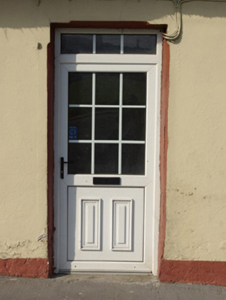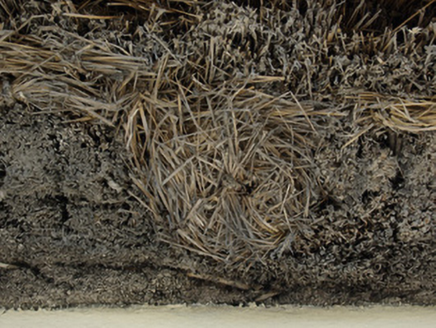Survey Data
Reg No
40851003
Rating
Regional
Categories of Special Interest
Architectural, Technical
Original Use
House
Historical Use
Shop/retail outlet
In Use As
House
Date
1800 - 1840
Coordinates
182489, 359264
Date Recorded
01/10/2007
Date Updated
--/--/--
Description
Attached three-bay two-storey vernacular house, built c. 1820, with single-storey extension(s) to rear (north-west). Possibly formerly in use as a shop. Pitched reed thatch roof with chicken wire and exposed scallops to ridge; cement rendered chimneystacks to gable ends (south-west and north-east). Projecting eaves course. Smooth rendered walls with raised smooth rendered quoin bands to corners. Square-headed window openings with chamfered reveals, painted sills and replacement windows. Central square- headed door opening with chamfered reveal and replacement door. Fronts directly onto street towards the east/north-east end of Bundoran.
Appraisal
This thatched vernacular house is the only example of its type still extant in Bundoran. Modest in scale, it exhibits the simple and functional form of vernacular building in Ireland. Of particular interest in the survival of the thatch roof, this is sadly now becoming increasingly rare in Donegal. Despite some alteration and the replacement of the fittings to the openings, the survival of this building is an important example of a former building tradition. The large window opening to the west end of the building suggests that it was formerly in use as a retail unit. The render detailing to window and door reveals provide evidence of attention to aesthetics on behalf of the design, and are probably later alterations. The form of this building having chimneystacks to the gable ends suggests that this building is of the ‘direct entry’ type that is characteristic of the vernacular tradition in north-west Ireland. This simple building is an integral element of the built heritage of Bundoran, and makes a positive contribution to the streetscape. Although this is the last surviving thatched building in Bundoran, the single-storey form of a number of the buildings to the east end of the town suggests that they were also formerly thatched. Indeed ‘several thatched houses’ were noted here by Rowan in 1979.











